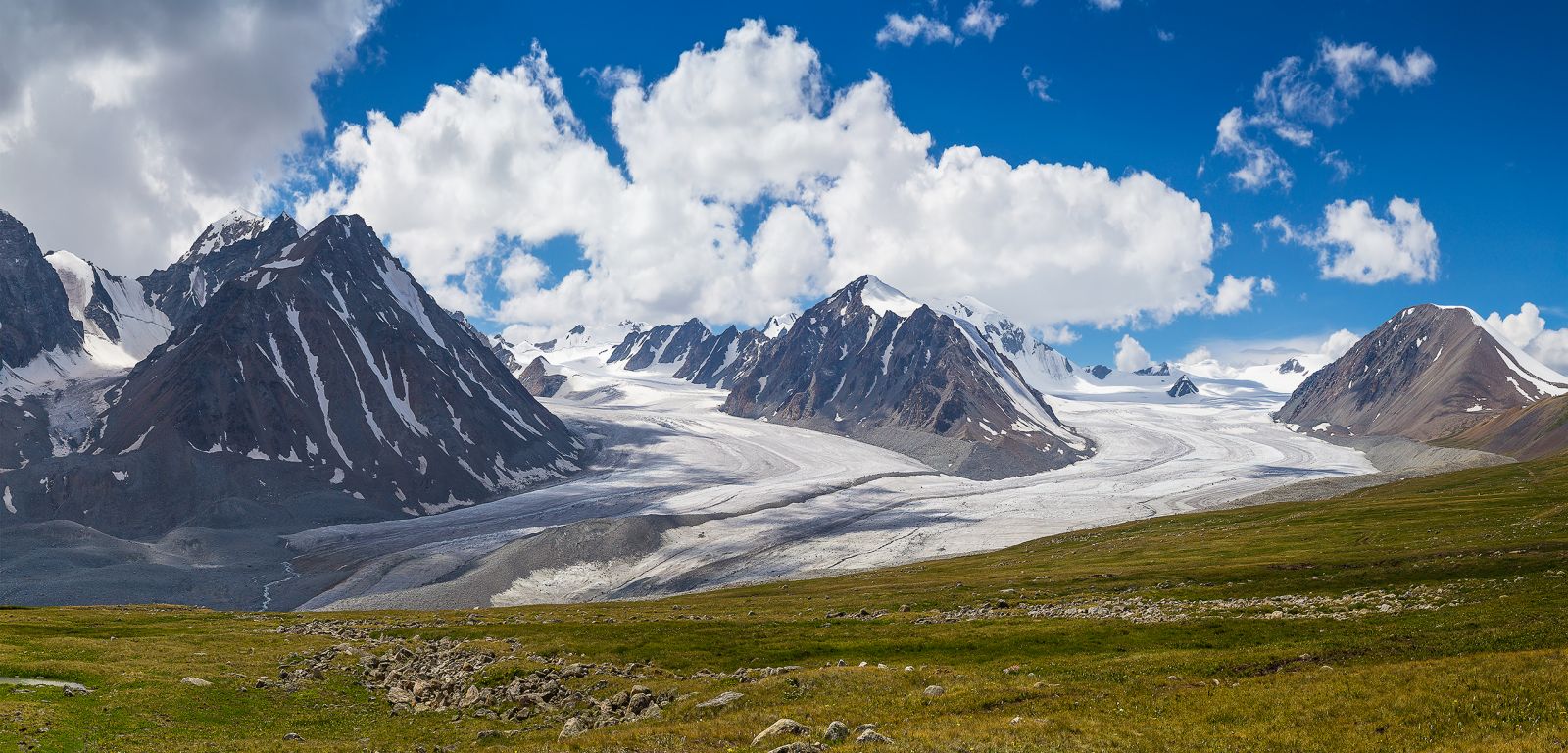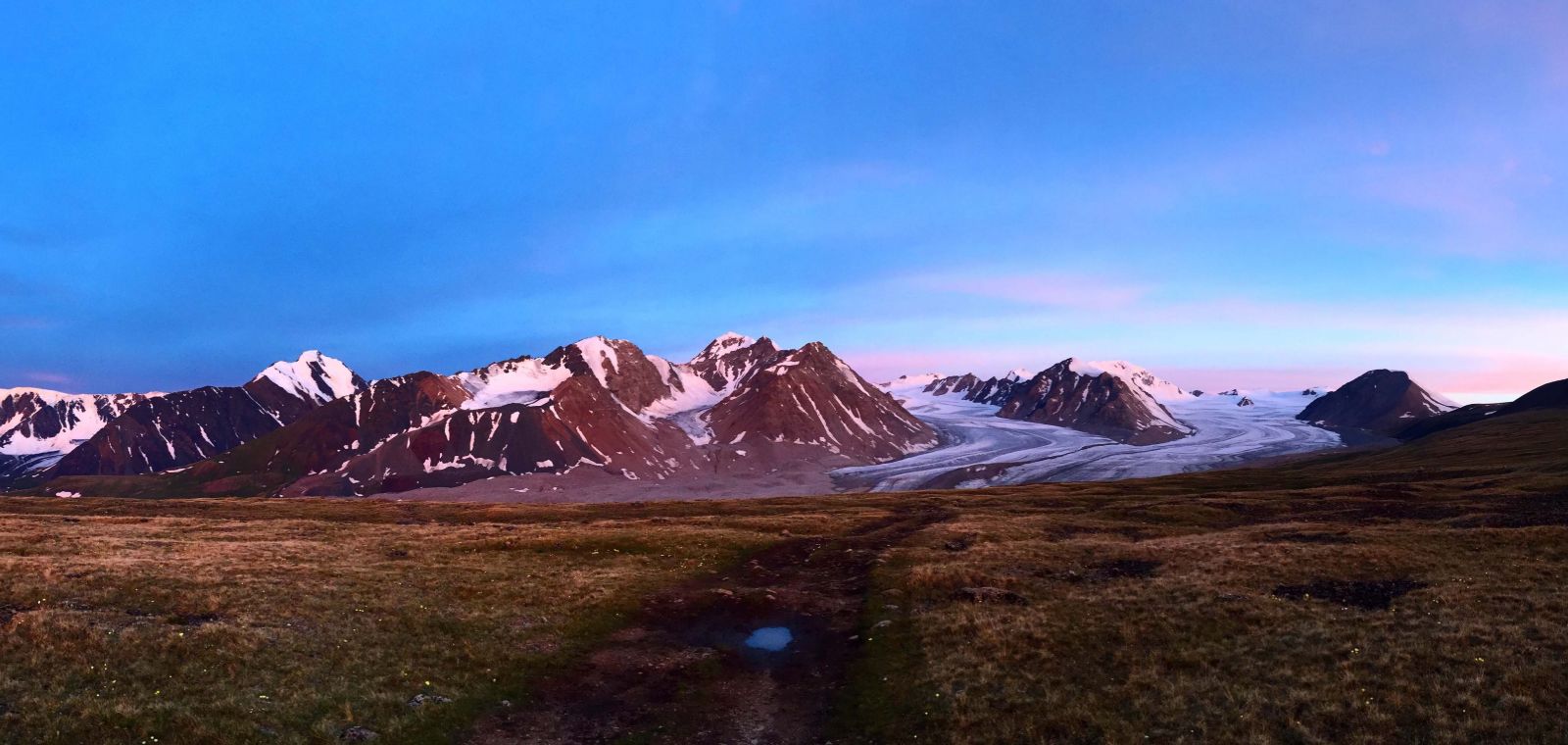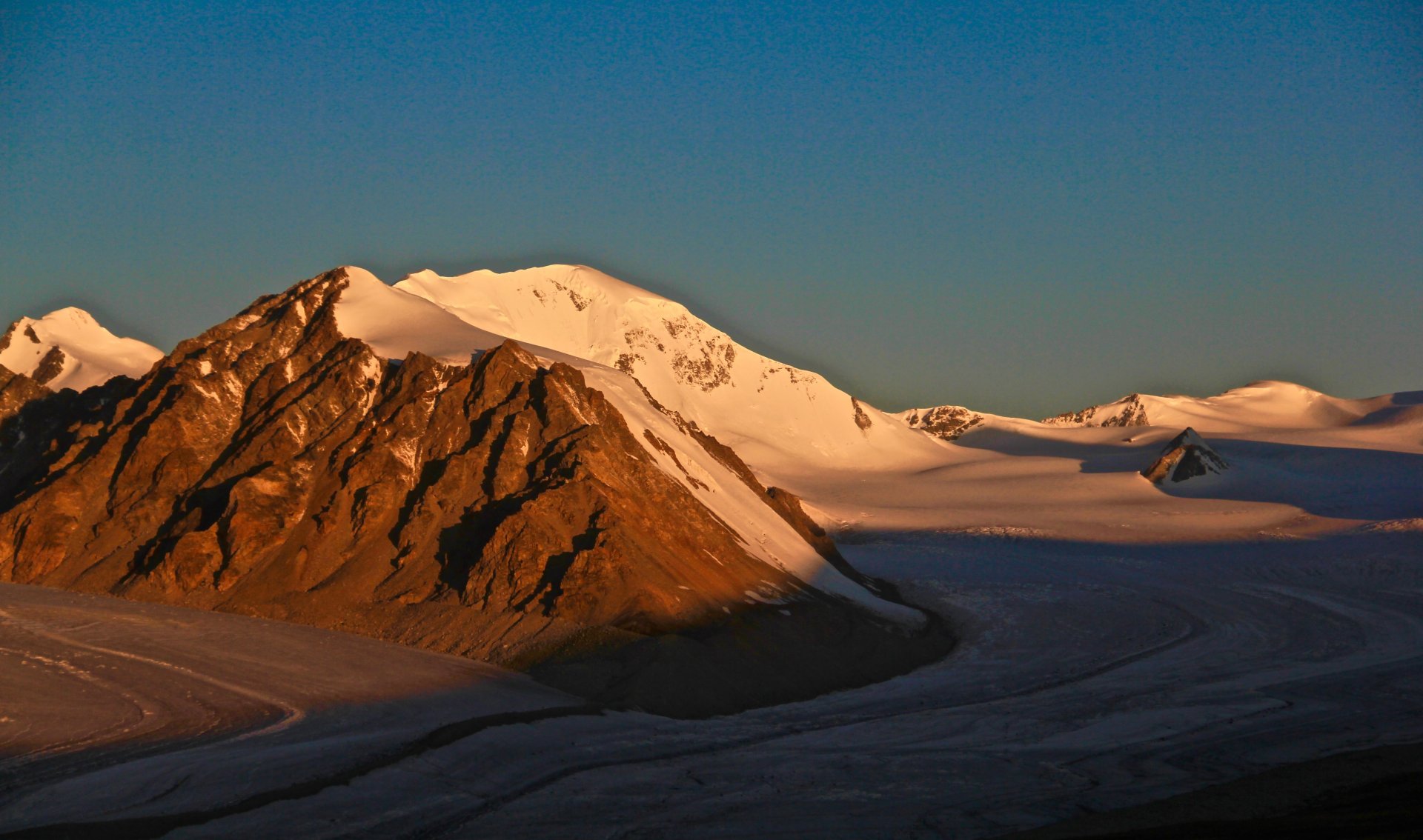Altai Tavan Bogd National park is located at the western extreme of Mongolia, the park ("Altai five saints nature complex") includes Tavan Bogd, the highest mountain in Mongolia.
Altai Tavan Bogd NP covers 6362 square kilometers and is located south of Tavan Bogd, the highest mountain of Mongolia. It includes the lakes Khoton, Khurgan, and Dayan. The protected area is inhabited by species such as the Argali sheep, Ibex, Red deer, Beech marten, Moose, Snow cock, and Golden eagle.
The (UNESCO) World Heritage Site Petroglyphic Complexes of the Mongolian Altai is located inside Altai Tavan Bogd National Park. The World Heritage Site covers three locations with several thousand petroglyphs and Turkic monoliths, including the Tsagaan Salaa Rock Paintings with over 10,000 cave drawings in 15 km of river valley.
The Tavan Bogd is a mountain massif in Mongolia, near the triple border with China and Russia. Its highest peak, the Khüiten Peak is the highest point of Mongolia at 4374 meters above sea level.
The Tavan Bogd massif is located mostly within the Bayan-Ölgii Province of Mongolia; its northern slopes are in Russia's Altai Republic, and western, in China's Burqin County.
Besides the Khüiten Peak, the Tavan Bogd massif includes four other peaks: Nairamdal, Malchin, Bürged (eagle), and Ölgii (motherland).

The Tavan Bogd Mountains and glaciers
Glaciation
According to satellite measurements, the total area of the glaciation in the Tavan Bogd massif area amounted to 204 km2 in 2009. The glaciates area was 213 km2 in 1989; in other words, the glaciers lost 4.2% of their area over the 20 years.
Out of the countries that share the massif, the largest glaciated area is in Mongolia; it includes the Potanin Glacier (Mongolia's longest) and the Alexandra Glacier.
According to a 2011 estimate, the northern (Russian) slope of the Tavan Bogd massif contains 12 glaciers, which cover a total of 22.8 km2. According to the Russian researchers, the glaciers of the massif's northern slope have lost 11% of their area between 1962 and 2002 and another 12% in 2002–2009




